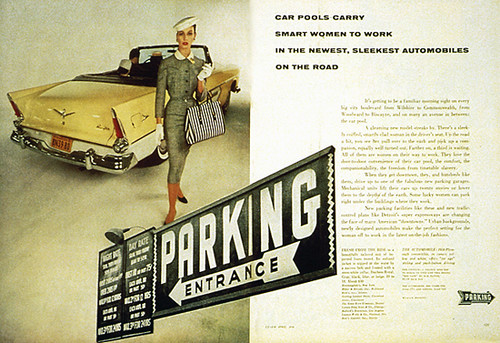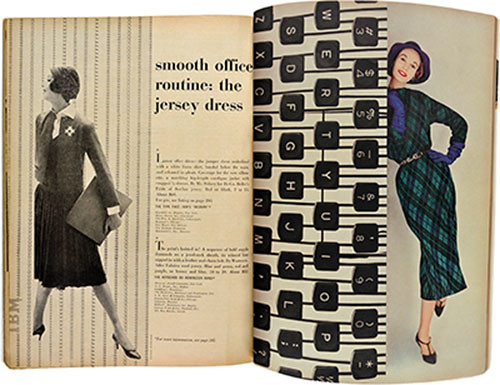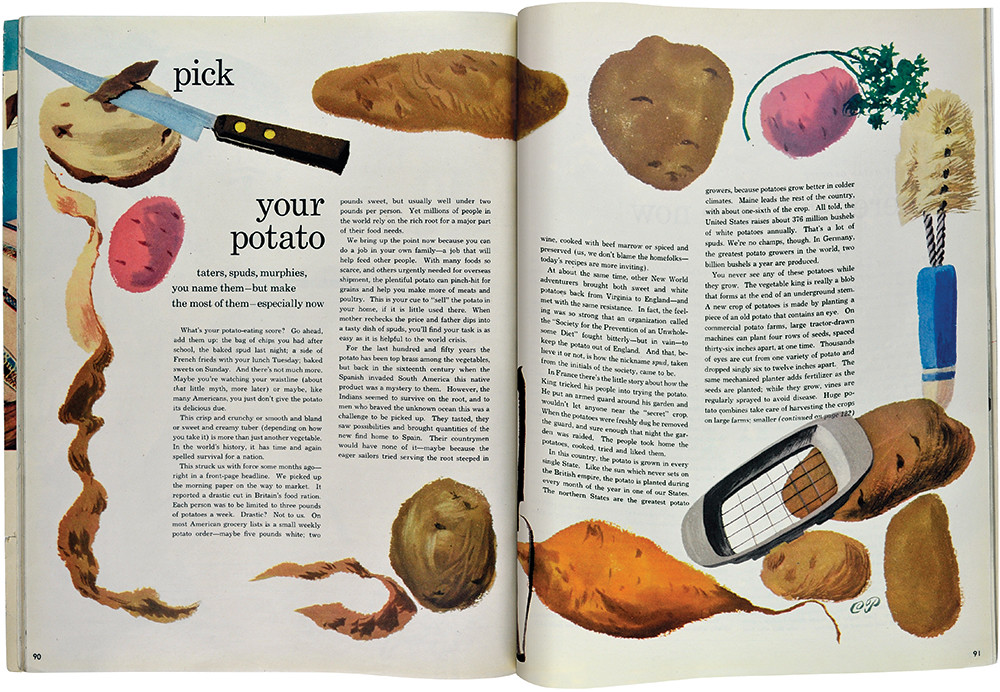Although Charm spoke to a cohort of white working women, the magazine touted the broader spectrum of women in terms of occupation, family life, and reasons for working. Feature stories addressed the various opportunities and common challenges facing working women, along with articles and literary pieces written by the era's leading cultural critics, journalists, and fiction authors. While it set high standards for content, Charm also became a conduit for reaching this new market, especially for clothing makers and retailers. Working women required different wardrobes for home, work, evening, and travel and this need for more clothing made them a lucrative market.

Back in the day, Vogue did not have a set-in-stone cover logo, so Pineles was free to experiment.
Designs for the Lincoln Centre. Cipe Pineles led the graphics department for the Lincoln Center, supervising the creation of branding and marketing materials for this institution of the arts.
Clearly, Pineles was with Parsons during the ’70s. Left: Parsons Bread Book (yearbook). Right: Parsons branding materials.
 |
Fashion story, from Charm, April 1956, uses an atmospheric urban backdrop of cars, a garage and vernacular signage. Photography by William Helburn.
|
 |
| Typography-dominated cover introduces a theme played out over fourteen pages inside, January 1954. Photography by William Helburn.
|
|
 |
| Fashion spread from Charm with office machinery and typing patterns representing work, September 1957. Photography by Carmen Schiavone. |
 |
| Connecting with Charm’s new audience, 19 million working women. Covers featured single women, though not usually ‘at work’; cover lines established the theme, July 1951.
|
|
 |
| Cover of Seventeen, July 1949. Reflection in the pool – with a twist. Photography by Francesco Scavullo. |
 |
One of many food paintings by Pineles, sometimes based on her own recipe book. Here she used a first sketch which was fresher than a subsequent ‘finished’ painting.
|






No comments:
Post a Comment